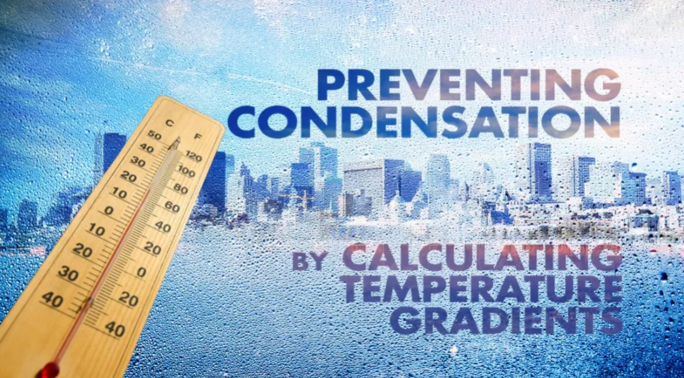Roof Coating and Installation 101

By John Kenny, Cotney Consulting Group.
Learn the ins and outs of roof installation and coatings from their history with the Egyptians to tips on proper installation.
History of coatings
Coatings are one of the oldest forms of waterproofing in the roofing and construction industry. While many consider coatings a recent technological endeavor, they can date back as far as 3000 BC with the Egyptians using mixtures of natural products to waterproof their boats. Other ancient cultures also developed coatings between the 1st and 2nd century BC and added color to their mixtures so the coatings were waterproofing and decorative.
In Germany in the late 1600s, a chemist developed a procedure to use the stickiness of pine coal tar as a protective coating on woods and natural rope products. This process gave birth to more modern organic, inorganic and synthetic coatings developed during the 19th and early 20th Centuries. Within the last 40 to 50 years, the development of polymers in coatings is the scientific advancement that has taken us to where we are today in the roof coating marketplace.
What are roof coatings
In this article, we are not going to cover a cold-applied roof system that consists of liquid coatings/adhesives and membrane reinforcement. We are discussing roof coatings that are designed for protecting and extending the useful service life of existing roof assemblies, such as BUR, metal, modified bitumen, single-ply membranes and SPF.
Roof coatings should not be confused with paint products; coatings are thicker than paint and have a higher solids content. Roof coatings are specially formulated to protect roofs from the damaging effects of weather and the environment. The quality of resins and the volume of resins added during manufacturing are what allow the coating to maintain elasticity throughout its lifecycle. Coatings are also applied in manufacturers' recommendations of multiple gallons per 100 square feet, unlike paint, which is typically used in portions of a gallon per 100 square feet.
Types of roof coatings
The most common types of roof coatings used in roofing today are acrylic coatings, asphaltic coatings, polyurethane coatings and silicone coatings.
Acrylic coatings
Acrylic coatings are water-based and are ideal for high UV environments where a reflective roof is desired. They can also be easily colored by adding different pigments. Acrylic systems are lower cost than other coating options and easy to install, making them a popular choice among contractors and facility owners.
Acrylic coatings are negatively impacted by ponding water and it will affect the overall performance of the system. Acrylic coatings should only be used on sloped roofs with adequate drainage. These coatings are also a water-based product and should not be allowed to freeze during storage. At the time of application, the outside temperature must be at least 50°F (10°C) and rising for the coating to adhere to the roofing substrate properly.
Asphaltic coatings
Asphaltic coatings are either solvent-based "cutbacks" or emulsions. They are usually black or aluminized and are suitable for use in cold and inclement weather. Aluminized coatings provide a reflective and UV stable asphalt coating when required.
These coatings must only be used over an existing roof system that is compatible with asphalt solvents and emulsions.
Polyurethane coatings
Polyurethane coatings are typically solvent-based and have favorable mechanical properties and high abrasion resistance. The base coat product is of the aromatic family, and the topcoat is aliphatic, which is UV stable, holds its color and resists dirt pick-up. Urethanes also provide excellent protection from hail and high traffic roof areas.
Polyurethane coatings emit a strong odor. The odor is not harmful, but care needs to be taken to prevent the odor from entering into a facility's fresh air intake system and disrupting the building's occupants.
Shelf life is a concern with single-component urethane coatings as they are continually curing—even in the pail. Two-part urethane coatings will not cure until mixed.
Silicone coatings
Silicone coatings perform well in high UV environments where a reflective roof is desired. Silicones are often used in locations where rain is a daily occurrence compared to other coatings that require prolonged curing times before it can be exposed to moisture. Silicone is a moisture-cure substance, which makes it an excellent choice to protect against the damaging effects of ponding water.
Silicones easily attracts dirt and other airborne particles, so over time, this accumulation of dirt and dust on the roof surface causes the system to lose its reflective properties. Most manufacturers recommend a silicone coating to be pressured washed within 6 to 12 months of installation, which helps to eliminate the future problem of dirt accumulation.
After curing, silicone systems become very slippery when wet. It is recommended that a well-marked (different color) granulated walkway path is provided to roof areas such as roof access points, HVAC units, other equipment, roof edges, etc.
Other types of coatings
Other roof coatings are made with different resins or combinations of resins. These can include, but are not limited to, butyl resins, fluoropolymer, PMMA, polyester, silyl terminated polyether (STPE), polyuria, PUMA, SEBS, and styrene-acrylics.
These types of coating systems are gaining popularity, especially for custom roofing applications and detailed requirements. Refer to the specific manufacturer’s recommendations for these systems for detailed installation instructions and precautionary guidelines.
Roof surface evaluation and preparation
Before you start a roof-restoration project, you need to thoroughly inspect the existing roof conditions to ensure the roof is a proper candidate for coating.
Using infrared technology will assist in locating wet insulation, which will need to be removed and replaced. Once your crews remove the wet insulation and install the new membrane, they can begin surface preparation and any other necessary repairs before the coating application.
The roof must be thoroughly cleaned using a pressure washer set at the proper setting so as not to damage the existing roof. Depending on the surface, the condition will determine the best solution mix for cleaning and always remember to thoroughly rinse cleaner and allow it to dry thoroughly before proceeding with the coating application. Proper preparation is a critical step to ensure a successful coating application. Always refer to the coating manufacturer you are using for their specific requirements for roof preparation.
Depending on the coating type, as outlined above, and the surface you are coating, you will need to refer to your specific manufacturer's installation guidelines and instructions for the proper application methods and coverages you will need to use.
A roof coating project, like any other roofing project, will only be successful if you follow proper roofing practices. Always start with the inspection of the roof surface to ensure it is suitable and qualified for a restoration installation and then select the appropriate coating product. Properly prepare the surface, install the product to the manufacture’s quality guidelines, and you will deliver a quality and long-lasting coating application to your clients.
Learn more about Cotney Consulting Group in their RoofersCoffeeShop® Directory.
Original article source: Cotney Consulting Group






















Comments
Leave a Reply
Have an account? Login to leave a comment!
Sign In